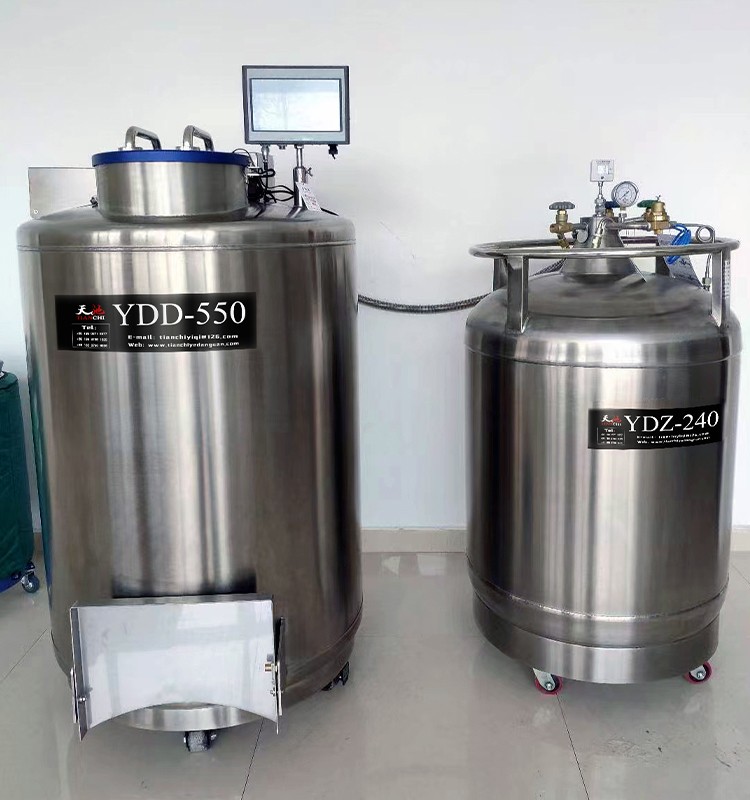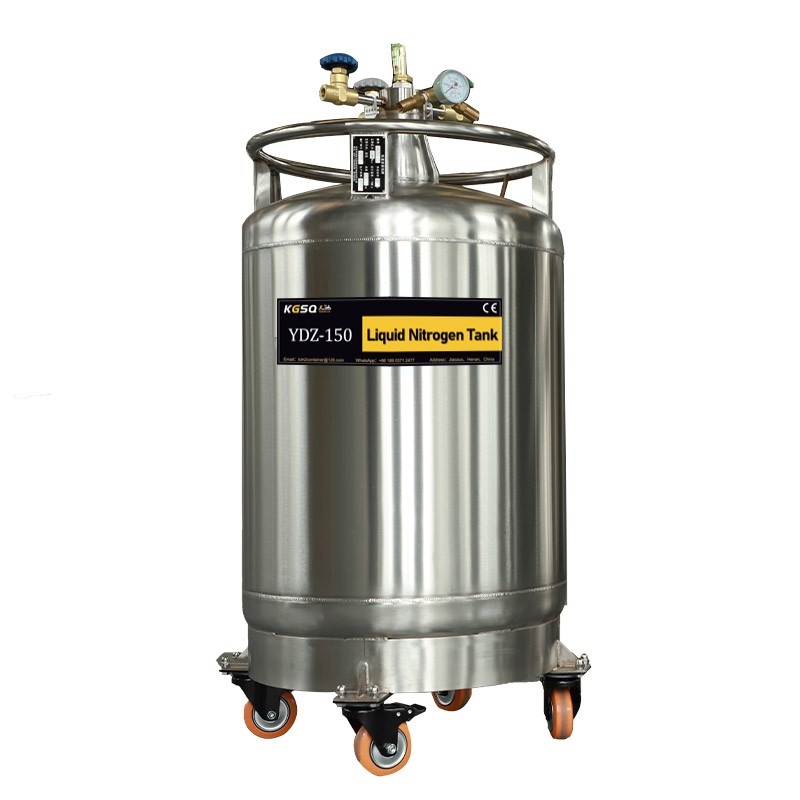In laboratories and scientific research institutes, liquid nitrogen is usually used as a refrigeration medium to freeze and preserve cell samples. However, liquid nitrogen is a consumable liquid. It volatilizes when exposed to heat. Even if it is stored in a low-temperature container, it will continue to evaporate and decrease. This also shows that when freezing cell samples, when the liquid nitrogen is less than a certain range, it needs to be replenished in time.
How to refill liquid nitrogen tank? How many methods are there to replenish liquid nitrogen?
There are three methods for replenishing liquid nitrogen: manual pouring, liquid nitrogen pump replenishment, and liquid nitrogen supply tank replenishment.
1. Manual pouring of rehydration fluid
It is suitable for replenishing small-capacity tanks and can be manually lifted to replenish liquid nitrogen into the tank. However, the temperature of liquid nitrogen is -196°, which is dangerous. Once the human body comes into contact with it, it may cause frostbite.
When pouring, you can use a funnel to prevent the liquid nitrogen from being poured outside because the diameter is too small. At the same time, protective measures should be taken to avoid exposing the skin.
2. Liquid nitrogen pump rehydration
The liquid nitrogen pump uses an air pump to liquefy the liquid nitrogen in the container, forming pressure to discharge the liquid nitrogen, thereby achieving the purpose of replenishing other liquid nitrogen tanks.
In addition, there are two types of liquid nitrogen pumps, foot pumps and mechanical pumps.
The foot pump needs to use the strength of the foot to discharge the liquid nitrogen; the mechanical pump is controlled by intelligent equipment, with large liquid displacement and easy operation.
However, it should be noted that both foot pumps and mechanical pumps are only suitable for 50mm diameter liquid nitrogen tanks.
3. Replenish liquid nitrogen supply tank
Its replenishing principle is similar to that of a Dewar flask. It uses liquid nitrogen to vaporize to achieve pressurization, thereby replenishing other liquid nitrogen containers.
Compared with the Dewar flask, its working pressure is lower at 0.1Mpa, making it more worry-free and safer to operate. It is often used in laboratories to reserve liquid nitrogen.













